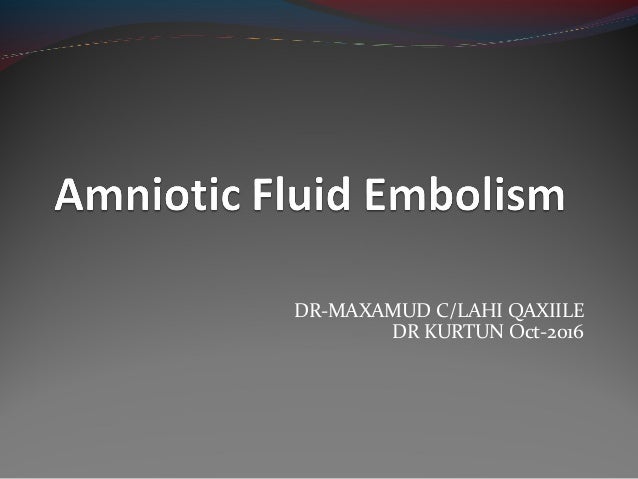


In the United States, AFE occurs in 2 to 8 per 100,000 deliveries and is the cause of maternal mortality between 7.5% to 10%. Survivors are frequently left with serious cardiac, renal, neurologic, and pulmonary dysfunction. The presentation is abrupt, usually with sudden cardiorespiratory collapse followed by severe coagulopathy and refractory resuscitation. Amniotic fluid embolism (AFE) represents the second leading cause of peripartum maternal death in the United States and the number one cause of peripartum cardiac arrest.
AMNIOTIC FLUID EMBOLISM VS PULMONARY EMBOLISM HOW TO
Outline correct methods of analyzing coagulation parameters and how to treat them once they are determined.

Describe the triggering pulmonary pathology that initiates the syndrome of amniotic fluid embolism.Identify the underlying risk factors for amniotic fluid embolism.This activity reviews the evaluation and management of AFE and highlights the role of the interprofessional team in evaluating and improving care for patients with this condition. This article will explain the clinical presentation of AFE, including a detailed description of the pathophysiology, and the very complicated evaluation and treatment modalities. Amniotic fluid embolism (AFE) is a rare entity, but one which has very high mortality and morbidity rates.


 0 kommentar(er)
0 kommentar(er)
